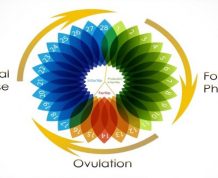![]() The information provided by our expert should not constitute a diagnosis of your condition. Always consult a medical practitioner or healthcare provider for a formal diagnosis. By making use of this content, you agree that ConceiveEasy and the expert assume no liability.
The information provided by our expert should not constitute a diagnosis of your condition. Always consult a medical practitioner or healthcare provider for a formal diagnosis. By making use of this content, you agree that ConceiveEasy and the expert assume no liability.
An IUD is a device that is implanted in a woman to help prevent a pregnancy. It is a great device because it can actually help prevent a pregnancy for several years at a time. After the device has expired, it will need to be removed and replaced in order to continue protecting against a pregnancy. Claim Your 20 Free Pregnancy Tests – Click Here
In most cases, when women are ready to conceive, they can do so simply by having the device removed. However, some women struggle to conceive after having an IUD in place for a number of reasons. One of the most common is because they are not able to ovulate.

When a woman ovulates, this means her body is producing a mature egg, releasing it and allowing it to travel through the fallopian tubes and into the uterus. When it reaches this point, it will wait for sperm to fertilize it.
Once the egg becomes fertilized, it will try to attach to the uterine lining in the uterus. However, if sperm doesn’t fertilize the egg, it will pass and the lining will shed, prompting the woman’s period. If a woman is not able to ovulate, she will not be able to get pregnant.

How do you get pregnant after IUD like Mirena? One of the best things you can do after having your IUD removed is to start tracking your ovulation cycle. You should begin ovulating within the first few months, so tracking it will help you determine when you should talk to your doctor.
To track your ovulation cycle, use either a basal thermometer or an ovulation predictor kit on a daily basis. Both of these items will help you determine when you ovulate. They are fairly easy to use and are available over the counter in drug stores and other locations.

If you find you are not ovulating, there are several things that can be done. One of the first things your doctor will want to do is prescribe medication that can force your body to ovulate. Clomid is the most popular and usually the first option you will be presented with.
There are also some over the counter supplements that can provide the same results as Clomid. However, keep in mind that these options will usually take longer to start working. Since they work naturally with the body, it can take them several months to regulate the hormones and make it easier for you to conceive.
For most women, becoming pregnant after having an IUD removed is fairly simple. However, other women struggle quite a bit after its removal. When you are ready to conceive, take time to talk to your doctor about how long you should expect to become pregnant so that you will know when treatment may be necessary.










Comments